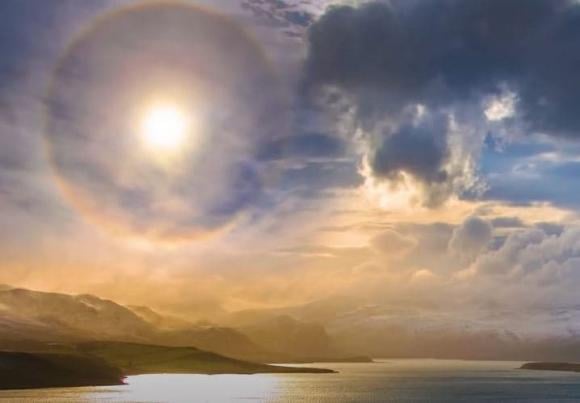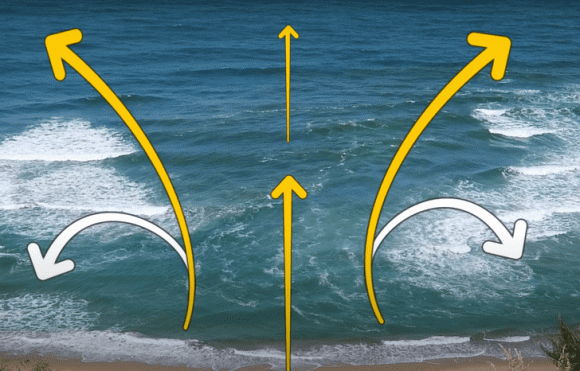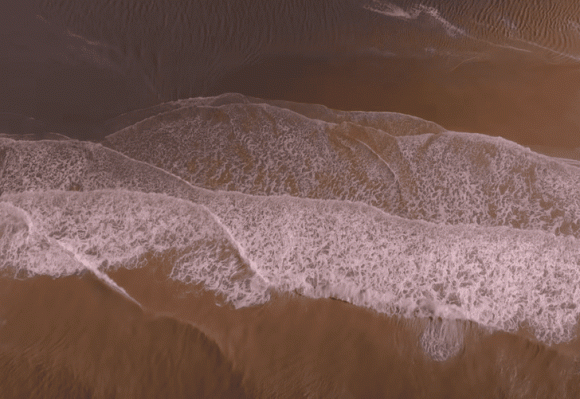If one sunny day while walking on the road, you suddenly notice the sun glaring intensely, and upon looking up, you see a circular rainbow-like halo around it, don’t stare at it for long. Find shelter immediately and avoid direct exposure to the sun as quickly as possible.
This halo is a natural sign indicating snow or a storm along the sun’s path. It’s caused by clouds formed from small ice crystals floating at an altitude of 20,000 feet (6 km).
Sunlight passes through these crystals, causing light to refract and separate, similar to the formation of a rainbow.
Avoid gazing directly at the sun halo. It may be mesmerizing as it’s not something you see every day, and it’s quite beautiful. However, the ultraviolet rays can potentially harm your exposed retinal tissues, causing severe damage. Hence, steer clear of it.
This phenomenon lasts approximately 40 minutes. These clouds are also the same type that sometimes create a mysterious circle around the moon at night.

Furthermore, there are other natural danger warnings to avoid:
- If you’re walking on a beautiful beach, with sand, sun, and no clouds in sight, then suddenly notice the waves retracting far from the shore, revealing coral pieces, small fish, and other random marine creatures… This is a sign to leave, as there might be an incoming tsunami. A tsunami forms when an underwater earthquake occurs, and it can hit the coast at speeds of 500 miles per hour (800 km/h).

- If there’s discolored murky water channeling on the beach, keep away. There might be an extremely hazardous underwater whirlpool. Sometimes, waves crash in a peculiar way, forming these currents away from the shore. You might notice a strange void in the waves or see bits of seaweed moving in various directions. If caught in a rip current, try to stay afloat without exhausting yourself by swimming against it. Call for help and swim parallel to the shore. Once out of the channel, swim diagonally towards the shore.

- You’re strolling on the beach (it always starts like this, doesn’t it?), and suddenly, there’s a cave. How fascinating! Perhaps you should enter and explore a bit, but no. If it’s a full moon, you might not get out of that cave. The full moon affects the tide, making it lower than usual. While the cave might seem more accessible, instead of an exciting adventure, you might end up trapped inside… until the next full moon.












